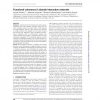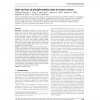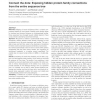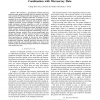ECCB
2008
IEEE
13 years 11 months ago
2008
IEEE
ECCB
2008
IEEE
13 years 11 months ago
2008
IEEE
Motivation: Extracting functional information from protein–protein interactions (PPI) poses significant challenges arising from the noisy, incomplete, generic and static nature...
ECCB
2008
IEEE
13 years 11 months ago
2008
IEEE
ECCB
2008
IEEE
13 years 11 months ago
2008
IEEE
Motivation: Mapping of remote evolutionary links is a classic computational problem of much interest. Relating protein families allows for functional and structural inference on u...
ECCB
2008
IEEE
13 years 11 months ago
2008
IEEE
CIBCB
2008
IEEE
13 years 11 months ago
2008
IEEE
— We introduce a graph-based relational learning approach using graph-rewriting rules for temporal and structural analysis of biological networks changing over time. The analysis...
CIBCB
2008
IEEE
13 years 11 months ago
2008
IEEE
Functional RNAs (fRNAs) play a key role in gene regulation, at both the transcriptional and translational levels. Identification of fRNA genes can be difficult, given that some cla...
CIBCB
2008
IEEE
13 years 11 months ago
2008
IEEE
— The genetic causes of many monogenic diseases have already been discovered. However, most common diseases are actually the result of complex nonlinear interactions between mult...
CIBCB
2008
IEEE
13 years 11 months ago
2008
IEEE
— Molecular docking is an essential tool for drug design. It helps the scientist to rapidly know if two molecules, respectively called ligand and receptor, can be combined togeth...
CIBCB
2008
IEEE
13 years 11 months ago
2008
IEEE
sequence content at an abstract level and offers novel ways to examine the information contained in them. Our approach is an information theoretic search process which uses patter...





